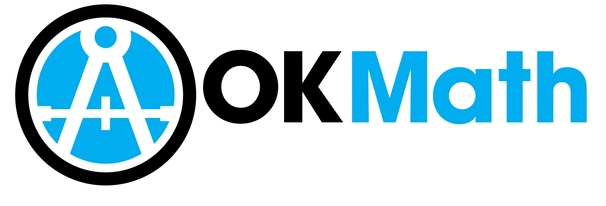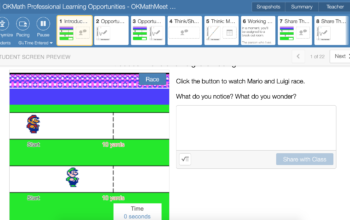As students develop into emergent mathematicians, the Standards for Mathematical Practice highlight certain habits or tendencies that describe mathematically proficient students. However, these standards seem to be less tangible to teach than the Oklahoma Academic content Standards. I know of no unequivocal recipe for developing sense-making capabilities or cultivating perseverance in students. But there are some classroom practices that have been shown to help bring these habits out.
1. Create a classroom environment in which struggle is expected.
As described in the standards, mathematically proficient students “consider analogous problems, and try special cases and simpler forms of the original problem in order to gain insight into its solution. They monitor and evaluate their progress and change course if necessary.” For this kind of strategic perseverance to happen, students must be provided with challenging tasks, and develop the habit of grappling with them long enough to step back, assess, and try a new tactic when necessary. One teacher I observed gives students a certain amount of “struggle time” each class period, during which students must attempt the work individually. If they cannot progress, they move to a new problem or use their notes, but they know they are developing stamina by not asking the teacher or peers for this set amount of time. As long as the students know the purpose for the “struggle time,” they seem to embrace the challenge.
Check out this resource:
2. Make space for students to share their different strategies for solving problems.
Students benefit greatly from hearing the explanations and understandings of others. The Common Core Practice Standards characterize mathematically proficient students as those who “check their answers to problems using a different method, and they continually ask themselves, ‘Does this make sense?’ They can understand the approaches of others to solving complex problems and identify correspondences between different approaches.” Fostering the ability to understand the approaches of others requires exposure to the approaches of others, and rich discussion about tasks. If students are faced with open-ended tasks and encouraged to share their tools and approaches, they will add more strategies to their toolboxes.
Check out this resource:
3. Probe student thinking through high-level questions.
When educators ask students to clarify and expand on their thinking, students’ sense-making abilities are highlighted and stretched. Asking, “Why does that make sense to you? (Or does it?)” allows for competing conceptions to be teased out until the mathematics becomes clearer. As I observed a master teacher, I noted more questions she skillfully employed: “Does everybody understand what _____ is arguing?” “Can anyone rephrase what (s)he is saying?” “Do you agree with that?” “Are you following this?” “Does anyone think they can come up and test this definition?” “Is this good enough, or does anyone see it another way?” “Is anyone wondering about anything?” These types of dialogues hold students responsible for making their own meaning, and allow them to engage in the work of mathematicians—checking every assertion against logical reasoning. Educators who develop perceptive dexterity with listening and pushing back on student discourse—without extinguishing it—help students analyze problems and strengthen tactics.
Check out this resources:
4. Model sense-making for students.
Students can learn a great deal about strategic thinking when teachers think aloud in front of them. By demonstrating how you monitor your own understanding and how you approach problems, students will learn how to analyze givens, constraints, relationships, and goals; how to make conjectures about the form and meaning of the solution and plan a solution pathway.
Check out this opportunity:
5. Maintain a safe classroom environment, in which students’ self-efficacy is upheld.
Perseverance requires a belief that success is possible with enough hard work. Researchers are beginning to illuminate counterproductive mindsets and beliefs that undermine perseverance in mathematics. One is the belief that mathematical ability is fixed–you’re either born with it or you’re not. If students are under the mistaken impression that if they have to work hard at math, they must not be very good at it, they are much less likely to sustain effort. Therefore, it is crucial that educators work to uphold a growth-mindset in students, emphasizing that everyone fights through confusion for a time–it’s all part of growing as a mathematical thinker.
The practice standards may not be directly teachable, but there are practices in classrooms that cultivate these highly beneficial tendencies. When students are given opportunities to face and discuss challenging tasks, defend and justify strategies, and supported with modeling and positive mindsets, they develop the skills to make sense of unknown, complex problems and persevere in solving them.





Great ideas Sammie! The Math Practices are my favorite thing about the Common Core Standards! This idea of challenge and perseverance is important in math, but also in so many other areas.